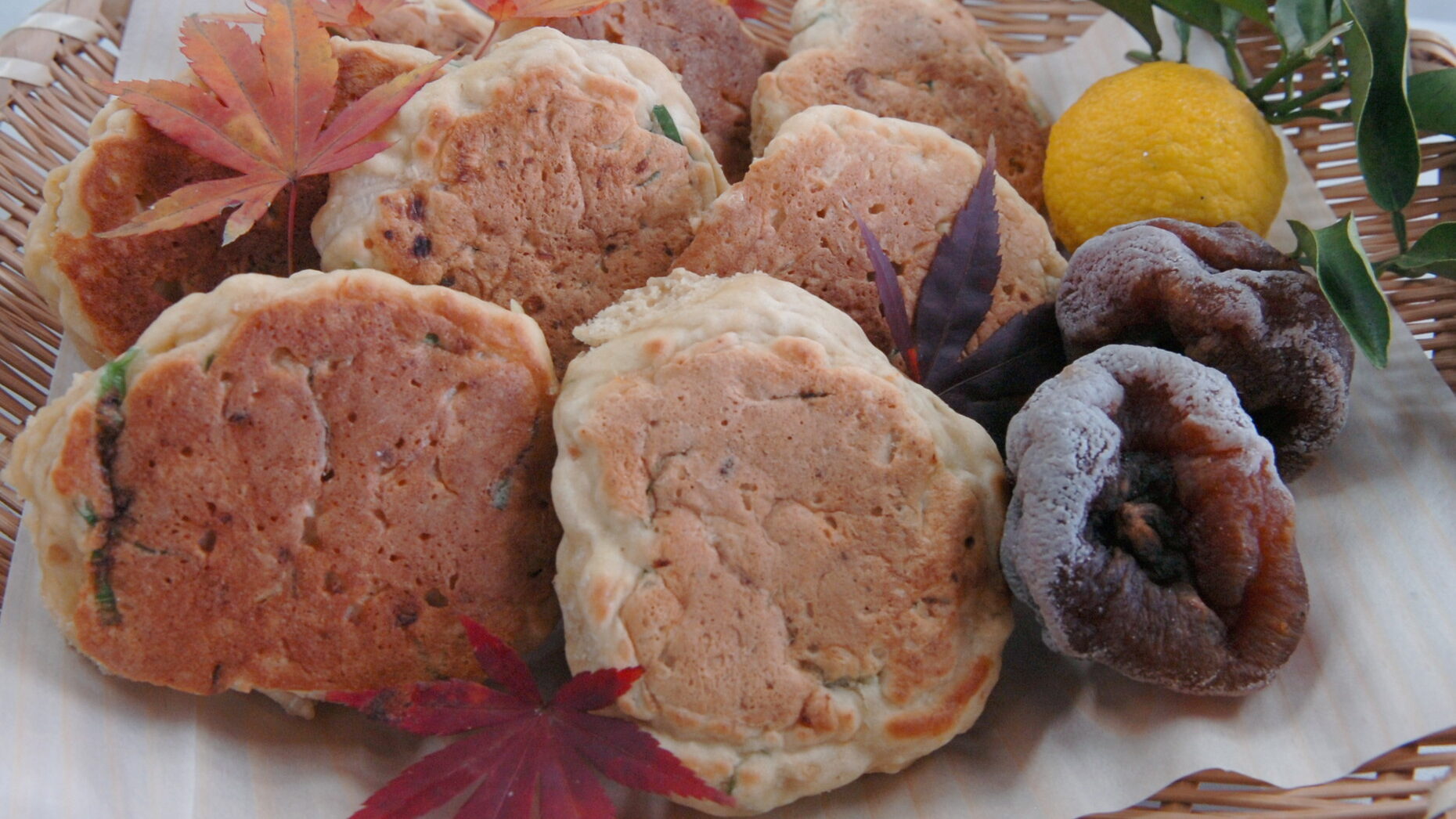
Alright, let’s check out a simple and satisfying dish from Gunma Prefecture – “Yakimochi”! It’s a type of baked wheat cake that’s been a local favorite for generations. With Gunma’s rich agricultural history, this dish is a testament to making the most of what the land provides.
Dish Name: Yakimochi / やきもち
- Region / Location: Throughout Gunma Prefecture.
- Primary Area of Tradition: Throughout Gunma Prefecture.
- Main Ingredients: Wheat flour, seasonal vegetables and herbs.
How It’s Eaten / Served
Gunma Prefecture is blessed with abundant water from the Tone River, some of the longest hours of sunlight in Japan, and diverse terrain ranging from 10 to 1,400 meters in elevation. This natural richness supports a wide variety of delicious agricultural products. In the plains of Gunma, a double-cropping system of rice and wheat has been common for a long time. Rice is harvested in the fall, and then wheat is grown in the spring. As a result, wheat-based dishes like udon noodles, mochi, and manju are popular as staple foods and snacks. “Yakimochi,” made by forming wheat flour dough into rounds and baking them, is one of these local dishes that has emerged from Gunma’s flour-based food culture. It’s often prepared with homemade soy sauce, miso, and seasonal vegetables, and baked in a traditional Japanese hearth called an “irori.” Depending on the region, it’s also called “oyaki” or “jiri-yaki.”
Cultural Background and Preservation
Yakimochi uses wheat flour, which is produced in abundance in Gunma, along with other ingredients that are readily available at home, such as seasonings and herbs. It’s easy to make and filling, making it a popular snack. It’s often enjoyed with tea or as a light meal. Originally, it was eaten as “kojuhan” (小昼飯), a snack eaten during farm work, and it was also taken as a simple lunch for work in the mountains.
There are no strict rules for making Yakimochi other than shaping the wheat flour dough into rounds and baking it, so there are many different ways to prepare it depending on the region. For example, some people mix wheat flour with baking soda, finely chopped seasonal vegetables, and herbs, shape the dough into rounds, and bake them slowly on a griddle or hot plate. Others make the dough with only wheat flour and baking soda and fill it with seasoned ingredients, like a manju. Some people steam the dough before baking it, and others use rice flour or glutinous rice flour instead of wheat flour. The freedom to prepare it in different ways depending on the region and family is one of the great appeals of Yakimochi.
Yakimochi is still made and eaten at home as a snack or light meal. The website “Gunma Agrinet,” which introduces Gunma’s agricultural products, also provides Yakimochi recipes, making it easy for people both inside and outside the prefecture to make it.
Additional information:
- Irori (囲炉裏): A traditional Japanese sunken hearth.
- Oyak (おやき): A Japanese dumpling made from a fermented buckwheat dough and filled with vegetables, fruit, or meat.
- Manju (まんじゅう): A traditional Japanese confection with a wheat flour or rice flour covering and a sweet filling.
- Kojuhan (小昼飯): A Japanese term for a snack eaten between meals, often during farm work.
The information about regional cuisine featured on this website (Piggy's Grandma of Japan) is summarized and adapted from the Ministry of Agriculture, Forestry and Fisheries of Japan (MAFF) website, "Our Regional Cuisines"Additional commentary is provided based on the unique experiences and perspectives of the site's editors.
The copyright for the original content regarding regional cuisine belongs to the Ministry of Agriculture, Forestry and Fisheries of Japan.
The summaries and adaptations published on this site are intended for informational purposes only. Piggy's Grandma of Japan does not guarantee the accuracy or completeness of this information. For the most accurate and complete details, please refer to the original pages on the MAFF website.


